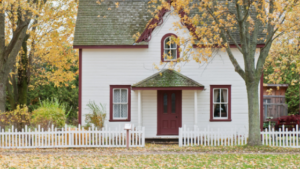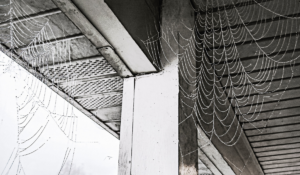
What is Gloeocapsa Magma?
Gloeocapsa Magma is the technical term for what is commonly considered black mold
The name is a bit misleading as it can show up as dark green algae or cause a brown discoloration. It affects asphalt roofs across much of the United States and is spread by wind and animals.
Where it comes from
The fungi normally begin their life cycle as airborne spores that will settle on your roof, especially roofs with asphalt shingles. The northern exposure of the roof stands a better chance for algae to survive because that part of the roof dries last after morning dew and rain.
Increased humidity levels on the surface of the shingle help the spores to grow from a dot to a spot, then a streak and as the colony grows. Older algae will decompose and hold moisture which allows for rapid new growth. The dark stain on the roof likely contains a number of fungi and molds.
How does it grow
Because roofs do not contain chlorophyll the algae have to get nutrition from some form of organic matter and the tar that is used in roofing is a great food source for the fungi. Tar contains fossilized, dead organic matter, exactly what the spores need. The algae also feeds on limestone in the shingles. The granule base of the asphalt is normally consumed first and once they are dislodged the deterioration will accelerate as the colony grows.
How it affects your roof’s stability
The granules protect against hail and falling debris, so losing that will open your roof up to damage. They also insulate against extreme heat and UV radiation and that adds to the cost of cooling your home as well as decreases the lifespan of the roof.
The effects to your family
Not all mold and algae bring a danger to your health, but some are more harmful, especially to the elderly, small children and those with compromised health. The spores from your roof can travel to the driveway during rain, and be tracked inside your home. Another entry point is through the air conditioning units that are working harder due to the presence of the mold, and can eventually grow in your air ducts.
Treatment
Excessive mold growth needs to be resolved. It is not just about the look of the roof, and the property value, it also shortens the lifespan of your home. The ‘dirt’ that comes off the roof is not just dust, it’s alive. Thankfully, Gloeocapsa Magma Algae can be removed and treated through roof cleaning. Unfortunately, it is difficult for this to be a DIY project. For many reasons it is best to leave the treatment of the algae to the experts.
IDW uses a Soft Washing process to remove the bacteria, algae, and mildew from your roof and other areas of your home, such as gutters fronts, siding, decks and patios, landscaping pavers, sidewalks, and driveways. The process uses Eco-Friendly cleaning agents to kill the algae and give you peace of mind.






